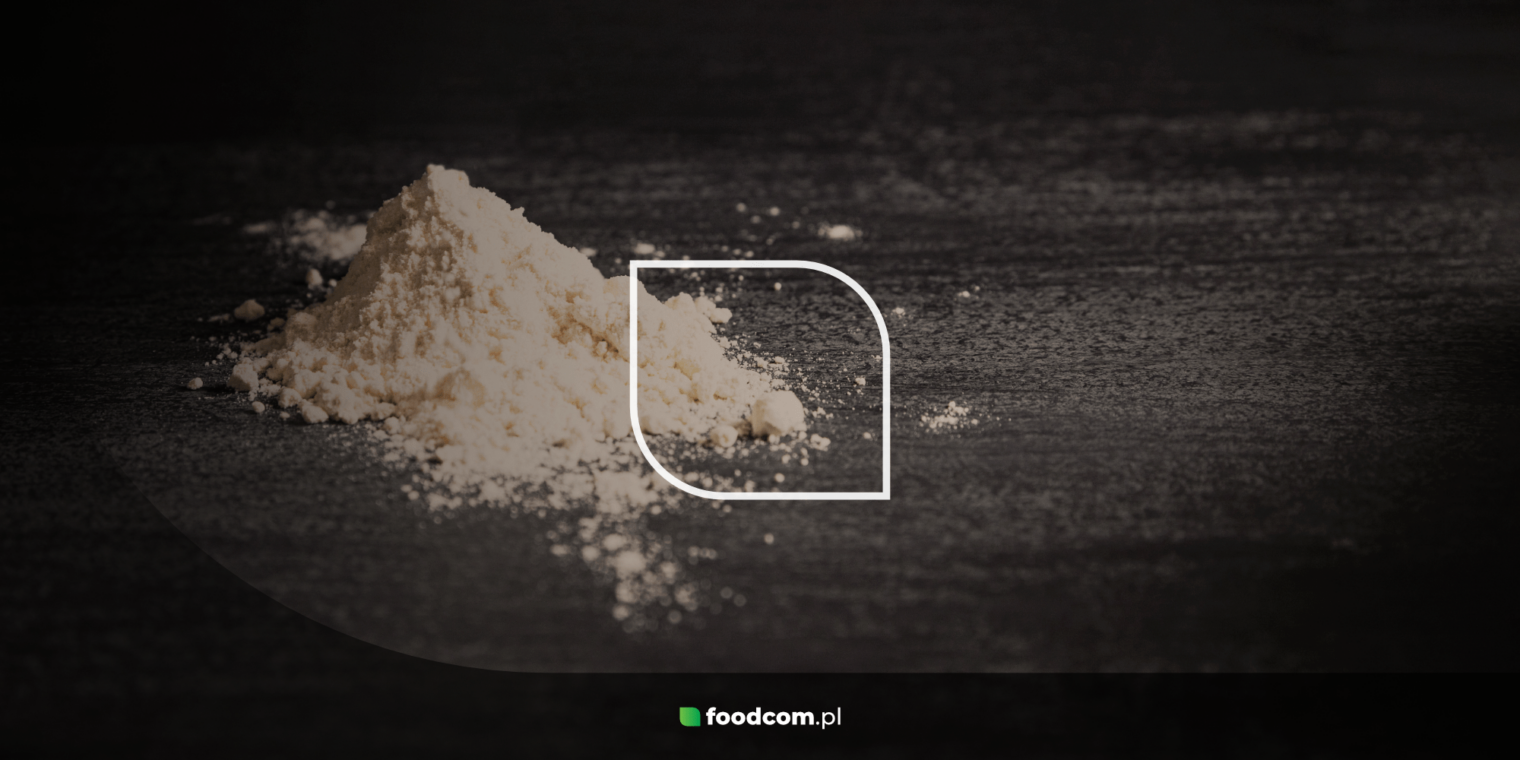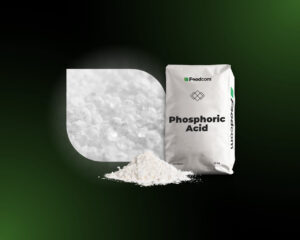- Phosphoric acid is a compound commonly found in living organisms and is necessary for their proper functioning.
- We usually encounter phosphoric acid (V) in the form of an aqueous solution, the concentration of which varies depending on the production method.
- Dry production of phosphoric acid is more expensive and more demanding, but leads to a more concentrated acid with fewer impurities than the wet method.
- Phosphoric acid is used in many industries. In particular, the production of fertilizers, the food industry, the pharmaceutical industry and the manufacture of cleaning products can be singled out.
What is phosphoric acid?
Phosphoric acid, otherwise known as phosphoric acid (V) or orthophosphoric acid (V), is an inorganic chemical compound belonging to the group of oxygen acids, that is, containing oxygen in its structure. It has the sum formula H3PO4.
Phosphoric acid 5 and its compounds – phosphates, such as salts and esters, play very important biological roles. They are components of nucleic acids, such as DNA and RNA, which store genetic material, and ATP, which is responsible for storing energy in cells. In addition, phosphorus compounds play important buffering and regulatory roles, by phosphorylating and defosphorylating proteins to control enzymatic activity and other metabolic processes in the body.
Properties of phosphoric acid
Phosphoric acid in its pure form is a colorless, odorless solid with a molar mass of 98 g/mol and a density of 1,685 g/ml at 25°C. Phosphoric acid is most often found as an aqueous solution, which is in the form of a syrupy liquid. Phosphoric acid for industrial use, offered by companies such as Foodcom S.A., is found in this form.
Phosphoric acid is a stable, moderately strong, tri-basic acid capable of acidifying solutions. It dissolves well in water and ethanol, is hygroscopic and has corrosive properties. In the food industry, phosphoric acid and other substances with similar properties are used as acidity regulators.
Where is phosphoric acid used?
The use of phosphoric acid is very wide. It is used, among other things, as a substrate for the production of:
- fertilizers,
- protective coatings on metals,
- pharmaceuticals, such as activated carbon and dietary supplements,
- rust removers and industrial descalers,
- soldering fluids,
- soaps, detergents and cleaners,
- cosmetics and toothpaste,
- micromachined materials,
- porcelain putties in dentistry, medical treatment and medical laboratories,
- laboratory reagents.
Phosphorus compounds are also widely used in the food industry. Phosphoric acid is used in the production of various foodstuffs, for example, it is used to purify juices in the sugar industry and in fruit processing, helping to remove undesirable substances. Its most popular use, however, is as an acidity regulator. In food, phosphoric acid is designated as an additive with the symbol E338. It is primarily encountered in products such as carbonated beverages like Coca-Cola and other foods such as jams.
What are acidity regulators? They are chemical compounds used as food or beverage additives to impart an acidic taste to foodstuffs. Many acids, including phosphoric acid, can also affect the increased shelf life of products and pH regulation.
As a pH regulator, phosphoric acid is also used in the production of cosmetics and skin care products, while as a disinfectant it is used in the food, dairy and brewing industries.
Phosphoric acid production
Types of phosphoric acid production include the so-called wet and dry processes.
Wet production of phosphoric acid involves the use of phosphate-containing materials, most commonly calcium phosphate. Minerals such as apatite and phosphorite, or ground animal bones are often used. This material is treated with sulfuric acid. The reaction produces phosphoric acid and calcium sulfate (gypsum), which is easily separated by filtration. The resulting acid usually has a concentration of 32-46%, so it is further subjected to concentration and purification.
The dry process is used to obtain high-purity phosphoric acid, such as for use in the food or pharmaceutical industries. It is a more expensive and energy-intensive process than the wet method, but results in phosphoric acid with a higher concentration and fewer impurities.
The dry process for obtaining phosphoric acid involves direct combustion of phosphorus in the presence of oxygen, followed by hydration of the resulting phosphorus (V) oxide by reaction with water. This process requires the controlled addition of water to avoid the formation of various polymeric forms of phosphoric acids, such as metaphosphoric acid or pyrophosphoric acid, which can be formed in the case of incomplete hydration. The need for pure phosphorus is also a challenge with this method. It is most often obtained by reducing phosphate ore in an arc furnace, through a so-called thermal process, in the presence of coke and silica.
Phosphoric acid is an extremely versatile chemical compound with a wide range of applications – from the food industry to the chemical industry to the cosmetic and pharmaceutical sectors. Its role as an acidity regulator and raw material for fertilizers makes it one of the key substrates of today’s industry. The role of phosphoric acid in the global economy is difficult to overestimate.










